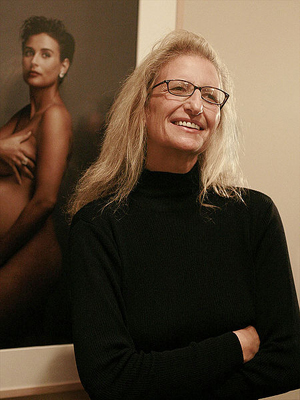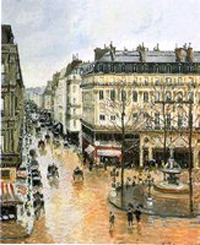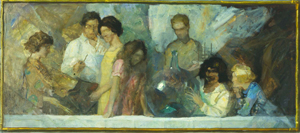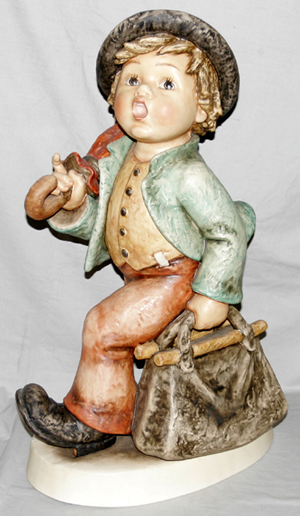NAPLES, Fla. (AP) – Some consider flipping to be an art form. It’s usually associated with homes, especially in the upscale southwestern Florida enclave of Naples.
But there’s also another type of flip. It’s one that involves high-priced paintings, many of them fake, and accusations of deception that include using the name of the world’s greatest golfer, Tiger Woods, as a lure.
Call it a Picasso Ponzi.
For Lionel and Etta Smith, senior citizens who live in the posh Bonita Springs area of Bonita Bay, adjacent to Naples, collecting art is a passion. They’ve decorated their 7,056-square-foot, $1 million home with their prized acquisitions.
So in 2006, when they met James R. Batson, then the curator of Jamali Fine Arts, an art gallery on Naples’ Fifth Avenue South, the art lovers became friends.
Lionel Smith, a retired insurance executive, and his wife, who chairs fundraisers for Hope Hospice, often went out to dinner with the art curator who claimed to come from a wealthy, well-established Southern family. They took trips together, visited art shows, and went to parties, including black-tie charitable fundraisers.
Their friendship and how it led to nearly $700,000 in investments in art by Pablo Picasso, Marc Chagall, Jamali and others, many of which turned out to be fake, is detailed in a lawsuit the Smiths filed recently in Collier Circuit Court.
“We believe we’re going to find a lot of folks coming out of the woodwork and everyone is going to wonder whether these paintings they bought are real,” said attorney Yale Freeman of Naples, who represents the Smiths.
He likened the Smiths’ investments with Batson to flipping.
“The real goal is not to have to pay out and you roll it over into the next one,” Freeman said.
Naples police records show they’re investigating reports of embezzlement from the gallery’s business account, unauthorized withdrawals that were reported on July 4 by Aqdas Khanjamali, the gallery’s original owner, an artist known as “Jamali.”
Attempts to contact Batson by e-mail to his Web site, InvestmentArtworks.com, weren’t successful. His home answering machine, which calls him an “art entrepreneur,” is full and wouldn’t accept messages asking for comment.
The Smiths’ lawsuit provides this account:
It started in August 2006 with the purchase of an original, authentic Picasso Self-Portrait. The Smiths gave Batson $3,900 from their IRA account. He promised it would sell quickly.
Four days later, Batson told them it was sold and the Smiths took him up on two more proposals.
Batson urged them to roll over the profits from that sale into Picasso’s Dora Maar. He also said he was so impressed with how quickly the Picasso Self-Portrait had sold, he’d bought it back. He asked them to partner with him on its next sale.
They gave him $7,000 for a partial interest in the Picasso Self-Portrait and Picasso’s Study of Jacqueline. The profits from the original sale were rolled into buying the Dora Maar.
Batson told them the Study of Jacqueline and the Picasso Self-Portrait sold quickly, for an “incredible” $30,000 each. He convinced them to use those proceeds to purchase another supposed original and authentic Picasso, Pastel.
The Smiths invested another $52,500 from their IRA account on Aug. 29, 2006.
Batson told them he had sent an image of it to Sotheby’s in New York and they’d appraised it at $300,000 to $500,000.
Through 2007, the Smiths were shown art, receipts, and provenances, which prove authenticity, leading them to invest in artwork and increased shares in art ownership with Batson.
Meanwhile in late 2006, Batson told them he’d quit his curator position at Jamali so he could focus on opening his own gallery. He asked for their financial help in purchasing art for his gallery, but they declined.
The next month, they traveled to a Miami art show, where the Smiths purchased a Picasso, sight unseen, from a foreign vendor after Batson told them it hadn’t cleared customs quickly enough to be in the show.
The Smiths bought Jamalis; a dozen signed Chagall lithographs called Twelve Tribes of Israel; Picasso linocuts, lithographs and sketches; shares in sketches from Picasso’s sketch book; and paintings that included The Miro, The Secret of the Rose, and The Vigee LeBrun, which they paid $7,281 to frame.
When Batson told them about a Picasso Brush Painting related to Head of a Woman, which was on display at the Picasso Museum in Paris, they paid $150,000 for that and a Jamali. But it was on the condition that Batson help them sell the Picasso.
“(Batson) told the Smiths that Sotheby’s thought their piece of art was quite a find and wanted to verify it in person,” the complaint says.
Batson supposedly made the trip and told them Sotheby’s authenticated it as the third in a series of three paintings, the first of which was at the Picasso Museum, and Maya Picasso, the artist’s daughter, owned the second.
When Batson told them Sotheby’s wanted the art reframed before it was auctioned, they gave him $2,300.
Batson often mentioned his gallery’s continuing construction and rental space. But it never opened and he blamed that on what he said was a recurrence of cancer. He also said he needed to move to Fort Lauderdale to “enjoy life” before undergoing chemotherapy in Naples.
At one point, Batson invited Lionel Smith to The Carlisle in Pelican Bay, which he said was his home, and showed them Jamali’s Woman of Peace, which they purchased for $58,000 after he told them there were many interested buyers, including Woods.
They also paid $93,000 for a two-thirds interest in another Jamali after being told Woods also wanted it.
Batston told them the Dora Maar would appear in Sotheby’s May 2007 catalog. When it didn’t, he claimed he’d pulled it to have it reframed and it would be in the November catalog with the Picasso Brush Painting. That never happened.
“When confronted with this glaring omission, (Batson) claimed that he personally pulled the Dora Maar from Sotheby’s sale because of personal tax consequences stemming from a large inheritance he just received and blamed the Brush Painting‘s removal on a mistake by Sotheby’s,” the lawsuit says.
He contended he couldn’t fix the mistake because he needed to undergo further chemotherapy in Houston because his treatments in Naples were unsuccessful.
On Nov. 30, 2007, the Smiths tried to resell The Twelve Tribes of Israel at a Sotheby’s auction, but were told they weren’t authentic, just small Chagall prints not even signed by the Impressionist.
Ten days later, when the Smiths submitted images of the Picasso Pastel to authenticate it for an auction, Sotheby’s doubted the authenticity and refused to have it sent for proper verification.
The Smiths later learned many of the receipts Batson gave them showing art purchases listed a fictitious gallery name, a bogus address, and a phone number that didn’t match that area, the suit said. Some provenances are suspect. One wasn’t even listed in the Picasso catalogue raisonné, the comprehensive listing.
Some works of art turned out to be fraudulent, while others came with authentication papers from “Collectart4less” and the same art collection as other suspected frauds. The Smiths did receive some paintings, but some are fake, some can’t be verified, and the whereabouts of others are unknown. Even the Sotheby’s stickers were fake, the suit says.
Their lawsuit, which contends Batson pretended to have cancer, alleges Batson committed theft, fraudulent and negligent misrepresentation, fraudulent inducement, fraud, conversion, and violated the Racketeer Influenced and Corrupt Organizations Act.
It also accuses him of breaching his fiduciary duty as a curator and art investor and seeks return of paintings the Smiths paid for.
The lawsuit asks a judge to order an accounting of Batson’s possessions, books and records, and all money obtained from the Smiths.
The lawsuit follows a complaint the Smiths filed in July 2008 against Cherise Castel in Collier Circuit Court to gain information on Batson. It alleges he’s unreachable and contends Castel benefited from the Smiths’ investments, knows Batson’s whereabouts and demands to know where the money and missing artwork went.
Records show she denied the allegations, saying she only accompanied Batson to entertainment events and once received a $12,800 loan from him.
The Smiths’ lawsuit says they were unaware Batson was fired from Jamali Fine Arts, supposedly for taking a Jamali’s customer list to open his own gallery. But Jamali turned the gallery over to Batson a few weeks before Jamali reported the missing funds to police.
State incorporation records show Batson filed business papers on Feb. 26 under the name Batson-Wynthrop Galleries.
Although records say it’s active, the gallery is closed.
___
Information from: Naples Daily News, www.naplesnews.com.
Copyright 2009 Associated Press. All rights reserved. This material may not be published, broadcast, rewritten, or redistributed.
AP-ES-09-08-09 1118EDT








